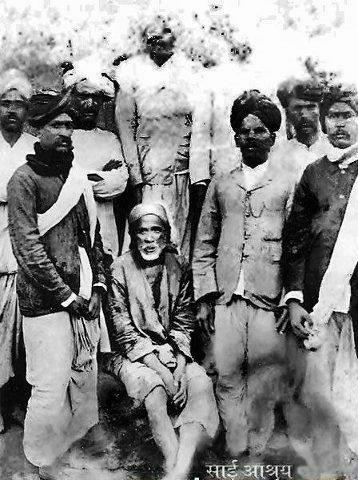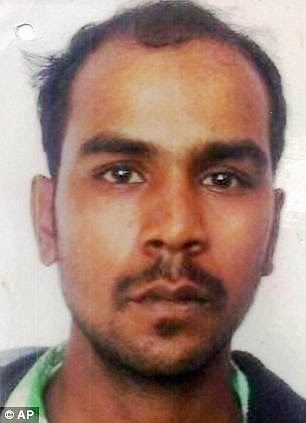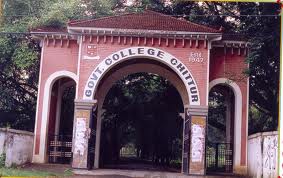Shri Shirdi Sai Tenth Incarnated Guru
The main advice of Shri Sai Baba
- Baba always encouraged charity and shared the happiness of sharing.
- If any creature comes to you for help, don't drive them away. Receive them with a respect and treat them well.
- Give water to thirsty, food to hungry, and allow a stranger to take accommodation in your verandah.
- If someone asked you for money and you are not inclined to give, don't give but unnecessarily don't bark at him.
Shirdi Sai Baba was an incarnation of Lord Dattatreya as the tenth and last Guru on this Planet Earth. He is regarded by his devotees as a Saint, a Fakir, a Satguru, and an incarnation (avatar) of Lord Dattatreya. He is revered by both his Hindu and Muslim devotees during, as well as after his lifetime. Saibaba is now revered as Saguna Brahma. He is attributed to be the creator, sustainer, and destroyer of this universe by his devotees.
According to accounts from his life, he preached the importance of realization of the self and criticized love towards perishable things. His teachings concentrate on a moral code of love, forgiveness, helping others, charity, contentment, inner peace, and devotion to God and guru. He stressed the importance of surrender to the true Satguru, who, having trod the path to divine consciousness, will lead the disciple through the jungle of spiritual training.
Sai Baba also condemned distinction based on religion or caste. It remains unclear if he was a Muslim or a Hindu. This, however, was of no consequence to Sai Baba. His teaching combined elements of Hinduism and Islam he gave the Hindu name Dwarakamayi to the mosque in which he lived, practiced both Hindu and Muslim rituals, taught using words and figures that drew from both traditions, and took samadhi in Shirdi. One of his well-known epigrams “Allah Malik” (God is King) and Sabka Malik Ek (Everyone's Master is One), is associated with both Hinduism and Islam. He is also known to have said Look to me, and I shall look to you.
Sai Baba's date of birth including his birthplace remains unknown and is debatable due to lack of evidence and no definitive information exists to prove it. The most definitive information about Shirdi Sai Baba tends to be derived from a book called Shri Sai Satcharitra written by a disciple called Hemadpant (also known as Annasaheb Dabholkar / Govind Raghunath) in 1922 in Marathi. The book itself is a compilation based on accounts by his various disciples and Hemadpant's personal observations observing Sai Baba from 1910 onwards.
Sai Baba's real name remains unknown. The name 'Sai' was given to him by Mhalsapati when he arrived at Shirdi, a town now in the west Indian state of Maharashtra. The word 'Sai' refers to a religious mendicant but can also mean 'God'. In several Indian and Middle Eastern languages, the term 'Baba' is an honorific signifying grandfather, father, old man, or sir. Thus Sai Baba denotes holy father, saintly father, or (venerable) poor old man.
Some of Sai Baba's disciples became famous as spiritual figures and saints, such as Mhalsapati, a priest of the Khandoba temple in Shirdi, and Upasni Maharaj. He was revered by other saints as well, such as Saint Bidkar Maharaj, Saint Gangagir, Saint Janakidas Maharaj, and Sati Godavari Mataji. Sai Baba referred to several saints as 'my brothers', especially the disciples of Swami Samartha of Akkalkot
Although Sai Baba's origins are unknown, some indications exist that suggest that he was born not far from Shirdi. Historical researches into genealogies in Shirdi give support to the theory that Baba could have been born with the name Haribhau Bhusari. Baba was well known for giving vague, misleading, and contradictory replies to questions concerning his parentage and origins, stating the information was unimportant. He had reportedly stated to a close follower, Mhalsapati, that he has been born of Brahmin parents in the village of Pathri and had been entrusted into the care of a fakir in his infancy. On another occasion, Baba reportedly said that the fakir's wife had left him in the care of a Hindu guru, Venkusa of Selu and that he had stayed with Venkusa for 12 years as his disciple. This dichotomy has given rise to two major theories regarding Baba's background, with the majority of writers supporting the Hindu background over the Islamic, while others combine both the theories (that Sai Baba was first brought up by a Fakir and then by a guru).
Baba reportedly arrived at the village of Shirdi in the Ahmednagar district of Maharashtra, India, when he was about sixteen years old. Although there is no agreement among biographers about the date of this event, it is generally accepted that Baba stayed in Shirdi for three years, disappeared for a year, and returned permanently around 1858, just after the Indian Sepoy mutiny. This posits a possible birth year of 1838. He led an ascetic life, sitting motionless under a neem tree and meditating while sitting in an asana. The Sai Satcharita recounts the reaction of the villagers
The people of the village were wonder-struck to see such a young lad practicing hard penance, not minding heat or cold. By day he associated with no one, by night he was afraid of nobody.
His presence attracted the curiosity of the villagers and the religiously-inclined such as Mhalsapati, Appa Jogle, and Kashinatha regularly visited him, while others such as the village children considered him mad and threw stones at him initially. After some time he left the village, and it is unknown where he stayed at that time or what happened to him. However, there are some indications that he met with many saints and fakirs, and worked as a weaver; he claimed to have fought with the army of Rani Lakshmibai of Jhansi during the Indian Rebellion of 1857 though it is not authentic.
Sai Baba returned to Shirdi in 1858. He appeared at the Khandoba Mandir in Shirdi. The temple priest, Mhalsapati, upon seeing him for the very first time, welcomed him by saying 'Aao, Sai!' ('Come Sai'). From then on, He was known by the name (Sai Baba).
Around this time he adopted his famous style of dressing, consisting of a knee-length one-piece Kafni robe and a cloth cap. Ramgir Bua, a devotee, testified that Sai Baba was dressed like an athlete and sported 'long hair flowing down to the end of his spine' when he arrived in Shirdi and that he never had his head shaved. It was only after Baba forfeited a wrestling match with one Mohiddin Tamboli that he took up the kafni and cloth cap, articles of typical Sufi clothing. This attire contributed to Baba's identification as a Muslim fakir and was a reason for initial indifference and hostility against him in a predominantly Hindu village.
For four to five years, Baba lived under a neem tree and often wandered for long periods in the jungle around Shirdi. His manner was said to be withdrawn and uncommunicative as he undertook long periods of meditation. He was eventually persuaded to take up residence in an old and dilapidated mosque and lived a solitary life there, surviving by begging for alms and receiving itinerant Hindu or Muslim visitors. In the mosque, he maintained a sacred fire which is referred to as a dhuni, from which he gave sacred ash ('Udi') to his guests before they left. The ash was believed to have healing and apotropaic powers. He performed the function of a local Hakim and treated the sick by application of ashes. Sai Baba also delivered spiritual teachings to his visitors, recommending the reading of the Ramayan and Bhagavat for Hindus and the Holy Quran for Muslims. He insisted on the indispensability of the unbroken remembrance of God's name (dhikr, and often expressed himself in a cryptic manner with the use of parables, symbols, and allegories).
Baba is believed to have grown and cultivated a garden called Lendi Baug, named after a river called Lendi which flowed nearby. The garden continues to be a place visited by pilgrims and has temples, Samadhis of people, and animals associated with Shirdi Sai Baba's life and temples. In 1910, Sai Baba's fame began to spread in Mumbai Numerous people started visiting him, because they regarded him as a saint with the power of performing miracles and recognized him as an avatar They built his first temple at Bhivpuri, Karjat.
The above video of the Shirdi Sai temple shows the huge Mahaprasadam program that takes place every day. It is one of the world's records
Video of Shirdi Sai Temple decoration
A pravachan scene from Shirdi Sai Baba TV Serial
Sudesh DJV writes on contemporary subjects in the form of Articles and poems which are in the interest of the Nation in particular and for Mankind in general.






.jpg)




Comments